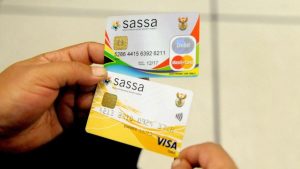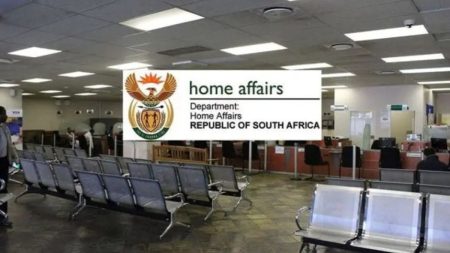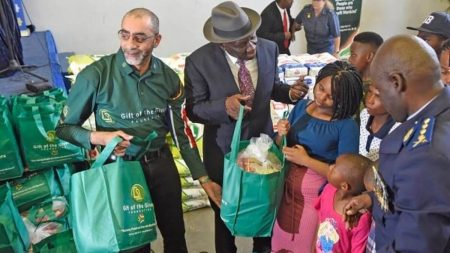Ensuring your child has access to education is one of the most important responsibilities for any parent or guardian. In South Africa, primary school education is compulsory for children between the ages of 7 and 15. But what happens if your child does not have a birth certificate? Many parents face this challenge, but there are processes in place to help ensure that your child can still be enrolled in school.
This article provides a step-by-step guide on how to register your child in primary school without a birth certificate, ensuring their right to education is not compromised.
Step 1: Understand the Legal Framework
The South African Schools Act (No. 84 of 1996) guarantees the right to education for every child, regardless of their documentation status. According to this law, no school can deny admission to a child on the grounds of not having a birth certificate.
The Department of Basic Education also issued a circular (Circular 1 of 2020) reaffirming that undocumented learners, including those without birth certificates, must be allowed to enroll. This includes children who are South African citizens, refugees, asylum seekers, or stateless individuals.
Step 2: Approach the School for Admission
Visit the school where you intend to enroll your child and explain your situation to the school principal or admission officer. Bring the following documents if available:
- Affidavit from a Police Station: This affidavit should state why your child does not have a birth certificate. For example, it might be due to a delay in the registration of their birth or challenges with Home Affairs.
- Alternative Proof of Identity: If your child has any other form of identification, such as a clinic card, baptismal certificate, or hospital birth record, provide these.
- Parent/Guardian Identification: Carry your ID, passport, or asylum document as proof of your relationship to the child.
The school is obligated to provisionally accept your application and give you time to resolve the documentation issue.
Step 3: Obtain a Letter of Admission
Once the school agrees to admit your child, they will provide a Letter of Admission. This document confirms that your child has been provisionally accepted at the school. Keep this letter safe as it will be important for follow-up processes with the Department of Home Affairs.
Step 4: Visit the Department of Home Affairs
After your child is provisionally admitted, the next step is to work on obtaining a birth certificate. Here’s how to proceed:
4.1. Apply for Late Birth Registration
If your child was born in South Africa, you can apply for a birth certificate through the Late Registration of Birth (LRB) process. This involves:
- Completing Forms: Visit your nearest Home Affairs office to complete the necessary forms for LRB.
- Submitting Supporting Documents: These may include:
- Your ID or passport
- Proof of birth (e.g., hospital birth record, clinic card, or sworn affidavit)
- Any other documents that verify the child’s identity
4.2. Resolve Citizenship Issues
If your child is not a South African citizen but was born in the country, consult Home Affairs for guidance on registering their birth or obtaining legal documents. Refugees and asylum seekers can apply for relevant documents through the Department of Home Affairs’ Refugee Reception Office.
Step 5: Follow Up with the School
After you have started the process of obtaining a birth certificate, keep the school informed. Provide updates on your progress and submit any additional documentation they may require. Schools are generally cooperative and willing to assist in ensuring your child receives an education.
Step 6: Work with Advocacy Groups (if Necessary)
In some cases, parents face bureaucratic hurdles when trying to resolve documentation issues. If you encounter difficulties, reach out to advocacy groups or legal organizations that specialize in children’s rights. These include:
- Section 27
- The Legal Resources Centre
- Centre for Child Law
These organizations can provide legal assistance or intervene on your behalf to ensure compliance with the law.
Step 7: Stay Involved in Your Child’s Education
Once your child is enrolled, take an active role in their education. Attend parent meetings, ensure they complete their homework, and stay in regular communication with teachers. Your involvement will not only help your child succeed academically but also reinforce the importance of education.
Tips for Success
- Act Early: Start the enrollment process as soon as the school admission window opens, typically in the year before your child is set to begin primary school.
- Keep Copies of All Documents: Make copies of every document you submit and receive, as these will be useful for follow-ups.
- Be Persistent: If you face resistance or delays, remain firm but polite. Remember, your child’s right to education is protected by law.
- Seek Help: Don’t hesitate to involve community leaders, school governing bodies, or legal organizations if needed.
Challenges You May Face
- Resistance from Schools: Despite the law, some schools may still attempt to deny admission to children without documentation. If this happens, report the school to the Department of Basic Education.
- Delays at Home Affairs: The process of obtaining a birth certificate can be time-consuming. Stay patient and persistent.
- Language Barriers: If you are not fluent in English, bring someone who can assist with translations during the process.
Also read: School Transport Safety Tips for Parents in South Africa
Registering your child in primary school without a birth certificate may seem daunting, but it is entirely possible with the right approach and persistence. The South African government, through its legal frameworks, guarantees every child’s right to education, ensuring that no child is left behind due to documentation issues.
By following the steps outlined in this guide, you can navigate the system effectively and secure a brighter future for your child.










